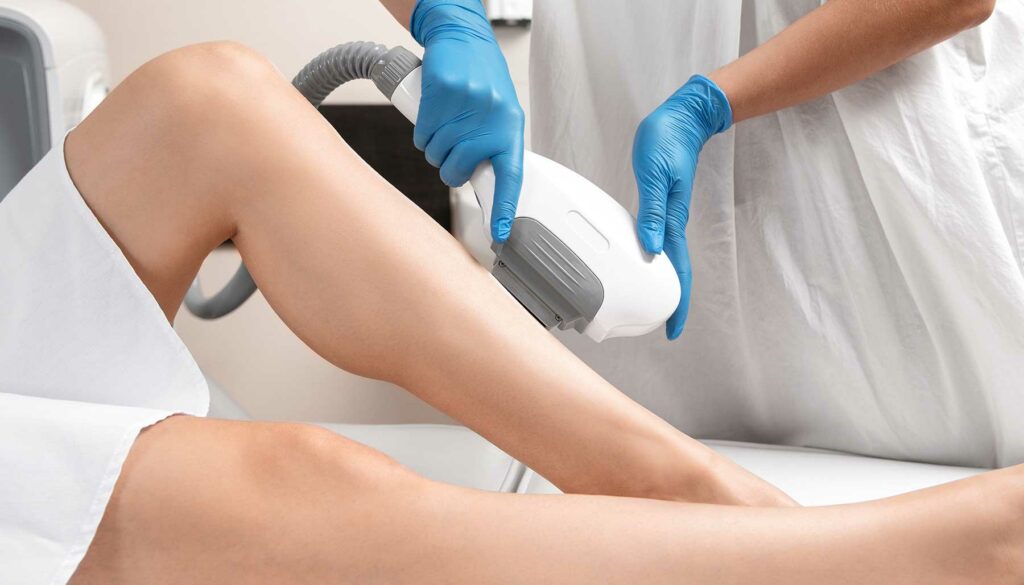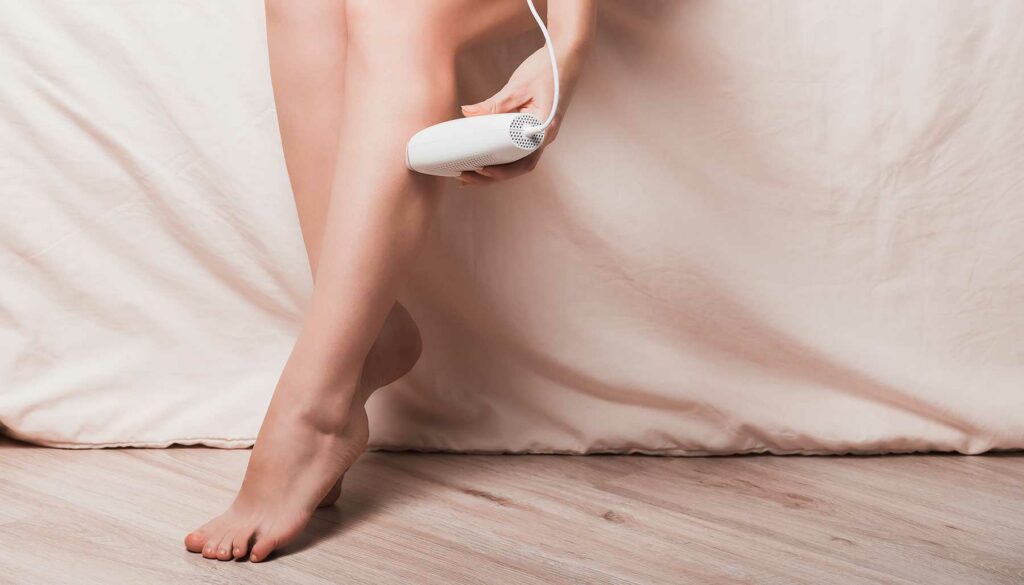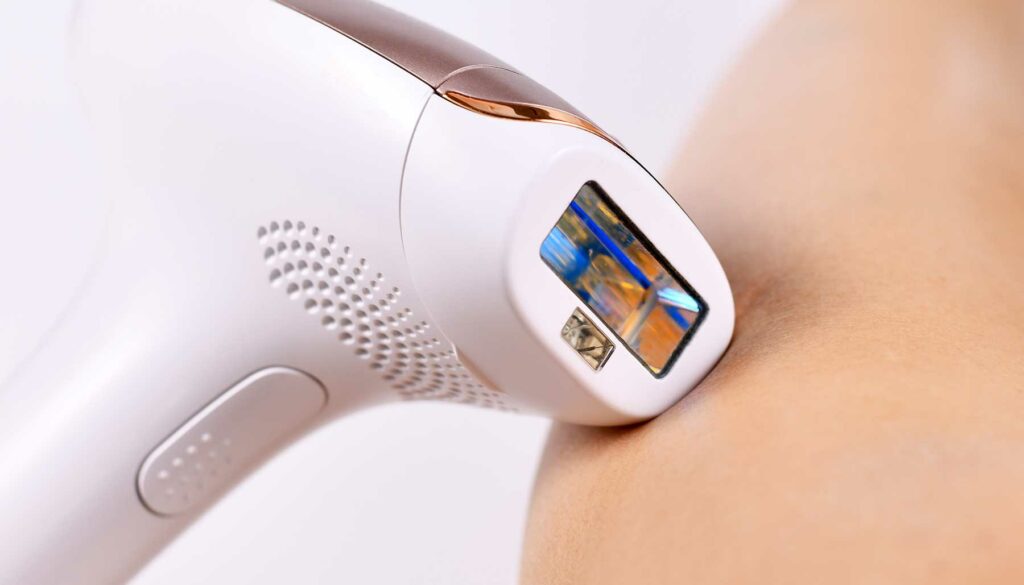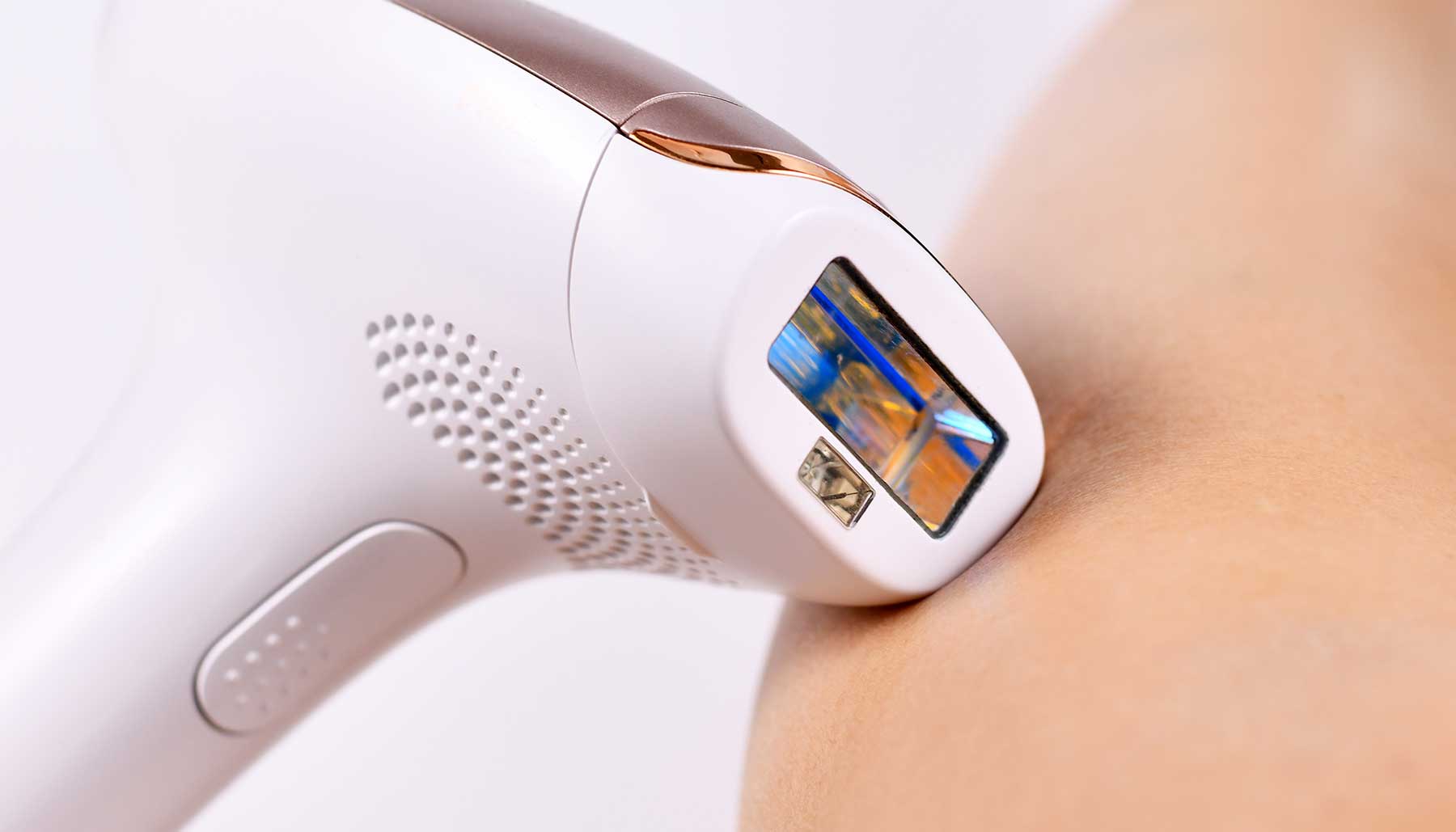I’ve been hearing a lot about IPL hair removal lately. I’m hearing it more from people interested in getting it done. There are plenty of med spas and skin clinics across the country offering IPL treatments.
Plus, there seems to be a rise in at-home IPL hair removal devices. Just this week alone, I’ve seen several ads come across my Facebook feed for them. Some of these at-home devices are now advanced enough to rival professional treatments.
These treatments aren’t exactly new, although I definitely see a spike in popularity all of a sudden. In fact, IPL has been around since the 1990s. So, let’s talk about what it is, and what it can do.
What Is IPL?

IPL stands for Intense Pulsed Light. It’s kind of what it sounds like! The treatment uses strong pulses of light to perform skin treatments, both for aesthetic and therapeutic purposes. It is sometimes called a photofacial and is a non-surgical way to improve the color and texture of your skin.
IPL treatments can stimulate or treat a variety of issues by taking advantage of a broad spectral range. IPL can be used to minimize or remove a number of things:
- Varicose veins
- Birthmarks
- Age spots
- Freckles
- Acne
- Discolored skin
- Redness from rosacea
- Scars
- Photoaging
- Unwanted hair
It is also being increasingly used in optometry and ophthalmology as well, but that is a conversation for another day!
How IPL Treatment Can Remove Unwanted Hair

Okay, so let’s talk about hair removal specifically, and how it works. Those strong pulses of light are actually targeting pigment. In terms of hair removal, it’s the melanin in the hair.
The light that comes out of the IPL device is absorbed by the pigment in the hair, which causes a buildup of energy that turns into heat. It’s kind of like when you wear a dark shirt on a sunny day. That light energy essentially destroys the structure of the hair or the follicle. Over time, the hope is that it will destroy all the cells you have that make new hairs, and voila! No more hair growth.
It’s not an overnight fix, though. One treatment isn’t going to immediately leave you smooth and silky. While some people might start seeing results in as little as a few weeks, this can differ from person to person.
Related: The Best Inexpensive Skincare Brands
And for full results, you’re looking at a longer timeframe. That’s because your hairs are not all in the same phase of their cycle at the same time. Just like your skin, your hair goes through a cycle of growth, shedding itself, and a rest phase. In order to catch ‘em all, and to get rid of unwanted hair across an entire area, you have to repeat IPL treatments. IPL affects hair during the anagen phase, which is when it is active and visible above the surface of your skin. It can’t destroy anything while the hair is dormant before the follicle has begun to produce new hair.
Subsequent treatment sessions continue until you achieve the desired results. The actual time frame will depend on your body and the area you are treating. Some may need several touch-ups, while others need much fewer. But, it’s probably safe to expect that you can be hair-free in your chosen area in less than a year if you keep up with treatment sessions.
Are IPL Treatments Safe?
If the idea of intense light pulses flashing into your skin sounds a little scary, it’s okay. I mean, we are talking about light energy burning up your hair follicles.
However, these treatments are safe. The light is attracted to the pigment in your hair, not the surrounding tissue. That means that it targets and removes the hair without causing damage to the surrounding skin. Various filters are also used to filter out shorter wavelengths, such as potentially damaging ultraviolet light.
And when compared to traditional hair removal methods, it is pretty harmless. There are no chemicals to irritate or damage your skin, no hot wax, and no sharp razors involved.
Related: Keratosis Pilaris: What Really Causes It, and How to Treat It
Does IPL Hair Removal Hurt?
Whether or not an IPL treatment hurts will depend on the person. If you ask a bunch of people who have had IPL done, they will likely all give you a different answer. We all have varying levels of pain tolerance, so what hurts for me might not hurt for you.
For the most part, IPL treatments are often compared to the feeling of a rubber band flick. Others will tell you it feels like a quick burst of heat. It’s worth noting that professional IPL machines sometimes have a built-in cooling system that will actively cool the area of the skin during treatment. This can definitely help with any discomfort.
The Difference Between IPL and Laser

A lot of this might sound similar to laser hair removal. So, what’s the difference between the two?
Both IPL and laser hair removal are permanent solutions to unwanted hair. Both methods use light to heat up hair follicles to prevent the regrowth of unwanted hair. However, the light source used for each hair removal method is the big difference between them.
While IPL uses a broad-spectrum light with varying wavelengths, a laser uses a single-spectrum light. That means that the light energy of IPL is more dispersed and less targeted because broad-spectrum light naturally spreads out. This enables IPL devices to treat larger areas in a quicker amount of time.
The single wavelength of light used for laser hair removal is more targeted and can be more effective. Though, large areas will take longer to treat. Laser hair removal does usually take fewer sessions to achieve desired results, but it is more expensive. There also aren’t any at-home laser hair removal devices – this one is for professionals only.
There Are Some People Who Shouldn’t Do IPL Hair Removal
While IPL treatment works wonderfully for hair removal, there are some instances where IPL is not a good idea.
First and foremost, not every skin tone or hair color is suitable for IPL hair removal. This light technology works by targeting pigment in the hair. So, in order for the treatment to work effectively, there needs to be a contrast between your skin tone and your hair color. That means that if you have light blonde hair and light skin, it might not provide the best results.
Many experts also warn against using IPL therapy on darker skin tones. Again, because IPL relies on targeting pigment, using this hair removal method on more pigmented skin can cause damage and discoloration of the skin. You risk hypopigmentation, hyperpigmentation, or even burning.
IPL also can’t be used on tattooed skin. This comes back to targeting pigmentation again. While you can use it just fine in other areas, trying to use an IPL device over a tattoo is definitely not a good idea. You’ll likely end up with severe blistering and burns, followed by slow healing and irreparable scars.
How to Choose an At-Home IPL Hair Removal Device

There is no shortage of at-home IPL devices available these days. As I mentioned already, I’m getting Facebook ads for the things at this point. From cheap options on Amazon to devices from well-known brands like Philips and Braun, there’s a lot to choose from. It definitely pays to do your homework ahead of time.
If you’re looking to purchase an IPL device you can use at home, this is what you definitely need to be looking for:
The Number of Flashes: To get your money’s worth, you want a product that is going to last. The number of flashes that the device will emit is how you can determine its lifespan. Because IPL treatments must be repeated over time to see lasting results, you don’t want to end up with a device that’s spent before you’re through! And if you buy that super cheap one you found, you might wind up having to replace it before you even achieve desired results. For reference, you’ll need roughly 600 pulses for one treatment of your lower leg, and around 100 pulses for your underarm area.
The Treatment Window Size: The window, or glass surface, is the part of the device that comes in contact with your skin. The wider the window, the larger the application area. A big one might be great for treating your legs, but probably not the best if you’re hoping to zap the hairs on your face. If possible, look for a device that comes with various heads to fit a variety of areas. This will allow you to comfortably treat whichever areas you like.
The Power: A good IPL device will feature varying levels of intensity. This will allow you to adjust the energy level depending on your skin type, and the area that you are treating. Different hairs have different thicknesses, and will require different settings!













